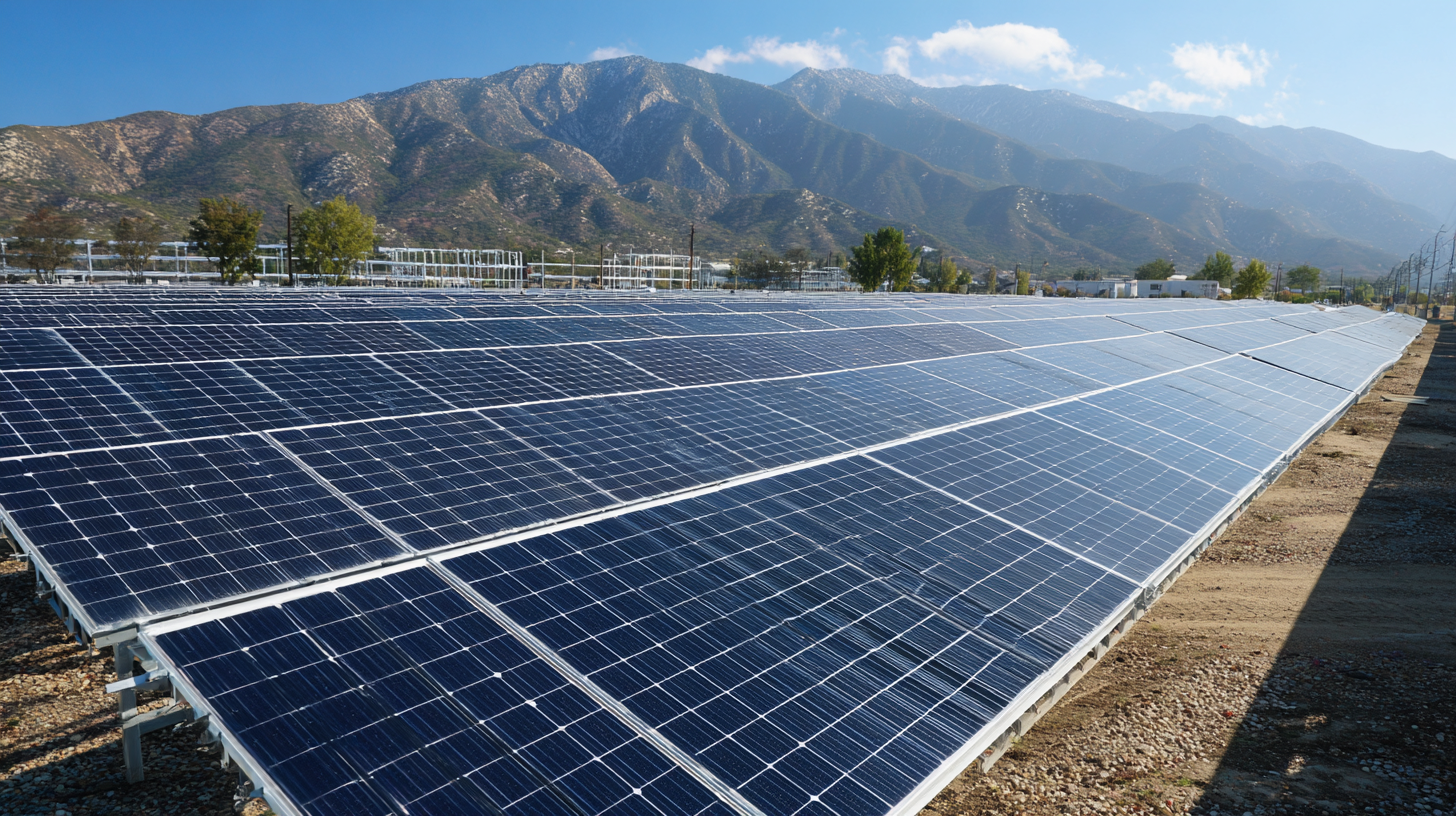Tel : 94870 36000, 94860 36000, 94890 36000
10 Reasons Solar Electricity is the Future of Energy with 85 Percent Growth Expected by 2030
As we look towards the future of energy, one thing is clear: Solar Electricity is poised to play a pivotal role in transforming our energy landscape. With an anticipated growth of 85 percent by 2030, this renewable energy source is not just an alternative; it's becoming a necessary component of sustainable energy solutions. In this blog, we'll delve into ten compelling reasons why Solar Electricity is not only a viable option but the future of energy itself. From reducing carbon footprints and lowering electricity bills to advancements in solar technology and government incentives, the benefits are numerous and far-reaching. Join us as we explore how Solar Electricity is paving the way for a cleaner, more efficient, and economically viable energy system for generations to come.

Table of Contents
[Hide]
The Environmental Advantage of Solar Energy: Reducing Carbon Footprint
As the world grapples with the repercussions of climate change, the transition to solar energy has emerged as a compelling solution. According to a report by the International Renewable Energy Agency (IRENA), solar energy has the potential to reduce carbon emissions dramatically. In fact, a comprehensive analysis found that solar power could abate up to 6.7 gigatons of CO2 per year by 2030, which is equivalent to taking over 1.4 billion cars off the road. This significant reduction highlights the essential role solar electricity will play in curbing global warming and promoting a sustainable future.

Furthermore, the environmental advantages of solar energy extend beyond carbon reduction. Research from Bloomberg New Energy Finance states that solar power is becoming increasingly cost-effective, with the levelized cost of electricity falling by 89% since 2009. This economic feasibility encourages widespread adoption, allowing communities and businesses alike to shift towards greener energy sources. With growing awareness and investment in solar technology, we can expect that by 2030, solar energy will not only lead the charge in energy supply but also pave the way for a cleaner planet for future generations.
Economic Benefits of Solar Power: Saving on Energy Costs and Job Creation
As the world increasingly shifts towards renewable energy sources, solar power stands out as a beacon of economic promise. Investing in solar electricity not only contributes to a healthier planet but also offers considerable financial benefits. Households and businesses that adopt solar technology can drastically reduce their monthly energy bills, allowing them to redirect funds into other areas. With the decreasing cost of solar panels and advancements in technology, the return on investment is more attractive than ever, making it a smart choice for anyone looking to save on energy expenses.

Moreover, the growth of the solar sector is set to create a significant number of jobs in the coming years. As demand for solar installations rises, so does the need for skilled workers in manufacturing, installation, and maintenance. The Solar Foundation reports that the solar industry has already created hundreds of thousands of jobs, with projections indicating continued expansion. This transition not only empowers workers with new skills but also stimulates local economies, making solar power a catalyst for community growth and resilience. Embracing solar energy is not just an environmental decision; it’s a powerful economic strategy for a sustainable future.
Technological Innovations Driving Solar Energy Efficiency
Technological innovations are at the forefront of the solar energy revolution, significantly enhancing the efficiency and viability of photovoltaic systems. Recent advancements in solar cell technologies, particularly those involving perovskite materials, have opened new avenues for improved energy capture and conversion. These next-generation solar cells promise to increase efficiency rates considerably, which is essential for meeting the growing global energy demands while minimizing environmental impact.
Innovative projects from around the world are showcasing how these advancements are being implemented on a large scale. For instance, floating solar installations and the use of advanced battery storage technology have emerged as game-changers, allowing for energy production even in space-constrained environments. Furthermore, breakthroughs like ultra-efficient solar panels utilizing novel materials demonstrate the industry's shift towards harnessing renewable energy in unprecedented ways. As these technologies continue to evolve, the expectation of 85 percent growth in solar electricity by 2030 seems not just plausible, but highly achievable.
Solar Energy Accessibility: Bridging the Gap in Energy Inequality
As the global push towards renewable energy accelerates,
solar power stands out not just as a clean energy source but also as a vital tool for addressing
energy inequality. Currently, over
1 billion people worldwide lack access to reliable electricity,
primarily in developing regions. According to a report from the International Renewable Energy Agency (IRENA),
expanding solar installations could provide electricity access to nearly
800 million people by 2030, effectively bridging the energy access gap.
The affordability of solar technology further enhances its potential to
democratize energy access. With costs of solar panels dropping by approximately
90% since 2010, households in low-income regions can adopt solar energy solutions,
reducing their dependency on expensive and unstable grid power. A study by Lazard estimates that
the levelized cost of solar has reached below $40 per megawatt-hour in several regions,
making it one of the most cost-effective energy sources available. This shift presents an unprecedented opportunity
to empower communities and promote sustainable development, making it clear that solar energy is not only a future energy source
but also a critical step toward equity in energy access.
The Future of Energy Storage: Integrating Solar with Battery Technology
As the renewable energy landscape evolves, the integration of solar power with advanced battery technology is poised to revolutionize energy storage solutions. The International Energy Agency (IEA) projects that by 2030, global battery storage capacity will reach 1,500 gigawatt-hours (GWh), a significant jump from today's figures. This exponential growth is driven by the declining costs of lithium-ion batteries, which have decreased by over 85% since 2010. The ability to harness solar energy during peak sunlight hours and store it for use during high-demand periods is a game changer for grid stability and energy reliability.
Moreover, recent reports from Bloomberg New Energy Finance indicate that the solar-plus-storage market could grow to a $620 billion market by 2040. This synergy not only benefits individual households and businesses seeking energy independence but also enhances the overall resilience of national grids in the face of climate change. By leveraging solar’s capabilities combined with intelligent storage solutions, communities can achieve a sustainable future, ensuring access to clean energy even when the sun isn’t shining. This integrated approach positions solar electricity as a cornerstone of a reliable, low-carbon energy system.
10 Reasons Solar Electricity is the Future of Energy with 85 Percent Growth Expected by 2030
| Reason | Description | Projected Growth (%) | Year |
|---|---|---|---|
| Renewable Energy Source | Solar energy is abundant and sustainable. | 85 | 2030 |
| Decreasing Costs | The cost of solar panels has significantly dropped. | 75 | 2030 |
| Job Creation | The solar industry is a major source of new jobs. | 50 | 2030 |
| Energy Independence | Reduces reliance on fossil fuels and imported energy. | 60 | 2030 |
| Technological Advances | Improving efficiency and battery storage technologies. | 70 | 2030 |
| Government Incentives | Support from various levels of government. | 80 | 2030 |
| Home Value Increase | Homes with solar panels have higher property values. | 55 | 2030 |
| Reduced Utility Bills | Consumers save money on energy costs. | 90 | 2030 |
| Climate Change Mitigation | Helps reduce greenhouse gas emissions. | 100 | 2030 |
| Community Impact | Fosters community investments and resilience. | 65 | 2030 |

